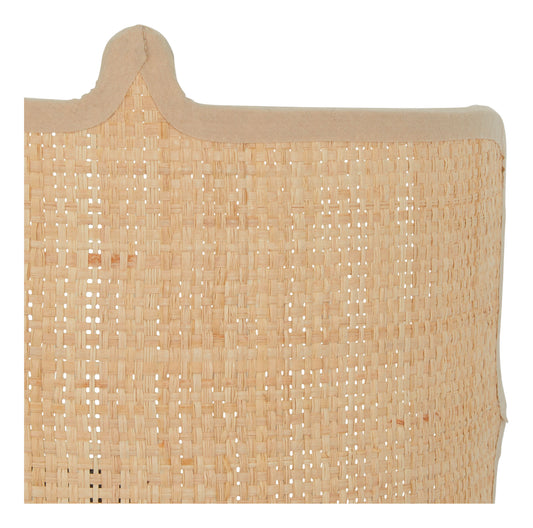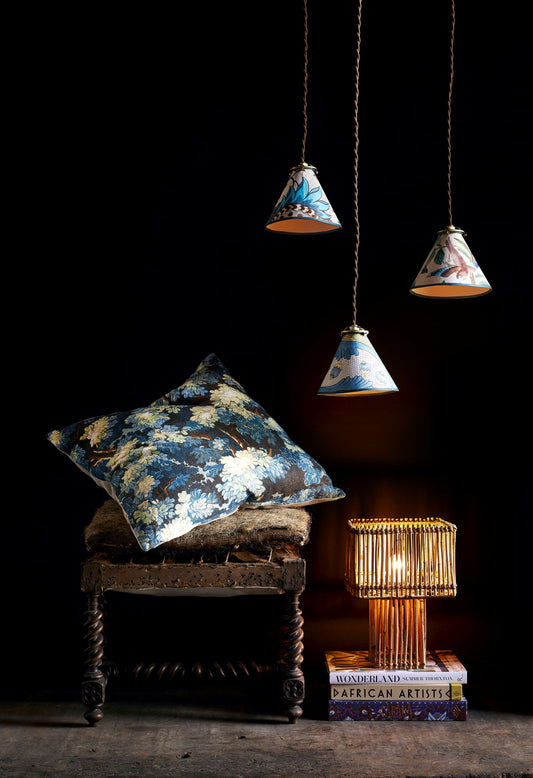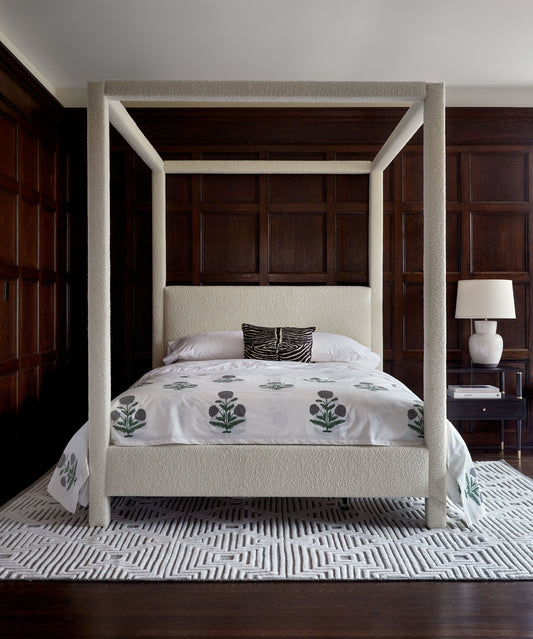
African Tribal Textiles
It's no secret we've been going through a blue period. But after piling up our usual haul of indigo textiles from one of our favorite dealers at a market earlier...
It's no secret we've been going through a blue period. But after piling up our usual haul of indigo textiles from one of our favorite dealers at a market earlier this year, these bright fabrics with pops of orange, pink, green (and, yes, more blue) certainly caught our eye. As early as the 16th century, elaborate and precious yarn-dyed silk fabrics were designed for wealthy Ghanaian tribal chiefs. Known as kente, these textiles were woven on small portable looms that were transported along ancient trade routes by nomadic peoples.
These looms produced narrow strips of cloth only three to five inches wide that were sewn together, edge to edge, to create exquisite fabrics that could be fashioned into a garment. Originally, kente cloth was only black and white until vegetable dyes emerged and a myriad of colors evolved. As time marched on and the influence of powerful chiefs began to wane, kente became more accessible to commoners. Nowadays, our African Tribal Textiles are woven using yarn-dyed cotton on strip looms that create four-inch narrow sections, which are then pieced together with cross-stitching.
They're high in contrast with sharp geometric designs and vibrant colors. At home, these textiles are a welcome shock in a sea of blues (or any neutrals for that matter). We love them for a pop of color at the foot of the bed or conveniently draped over the sofa, at arm's reach when you need a lightweight wrap. We’re packing them for picnics and bringing them along to the beach. Anywhere they go, they make things a little happier. And happier is a good thing — period.
It's no secret we've been going through a blue period. But after piling up our usual haul of indigo textiles from one of our favorite dealers at a market earlier this year, these bright fabrics with pops of orange, pink, green (and, yes, more blue) certainly caught our eye. As early as the 16th century, elaborate and precious yarn-dyed silk fabrics were designed for wealthy Ghanaian tribal chiefs. Known as kente, these textiles were woven on small portable looms that were transported along ancient trade routes by nomadic peoples.
These looms produced narrow strips of cloth only three to five inches wide that were sewn together, edge to edge, to create exquisite fabrics that could be fashioned into a garment. Originally, kente cloth was only black and white until vegetable dyes emerged and a myriad of colors evolved. As time marched on and the influence of powerful chiefs began to wane, kente became more accessible to commoners. Nowadays, our African Tribal Textiles are woven using yarn-dyed cotton on strip looms that create four-inch narrow sections, which are then pieced together with cross-stitching.
They're high in contrast with sharp geometric designs and vibrant colors. At home, these textiles are a welcome shock in a sea of blues (or any neutrals for that matter). We love them for a pop of color at the foot of the bed or conveniently draped over the sofa, at arm's reach when you need a lightweight wrap. We’re packing them for picnics and bringing them along to the beach. Anywhere they go, they make things a little happier. And happier is a good thing — period.





